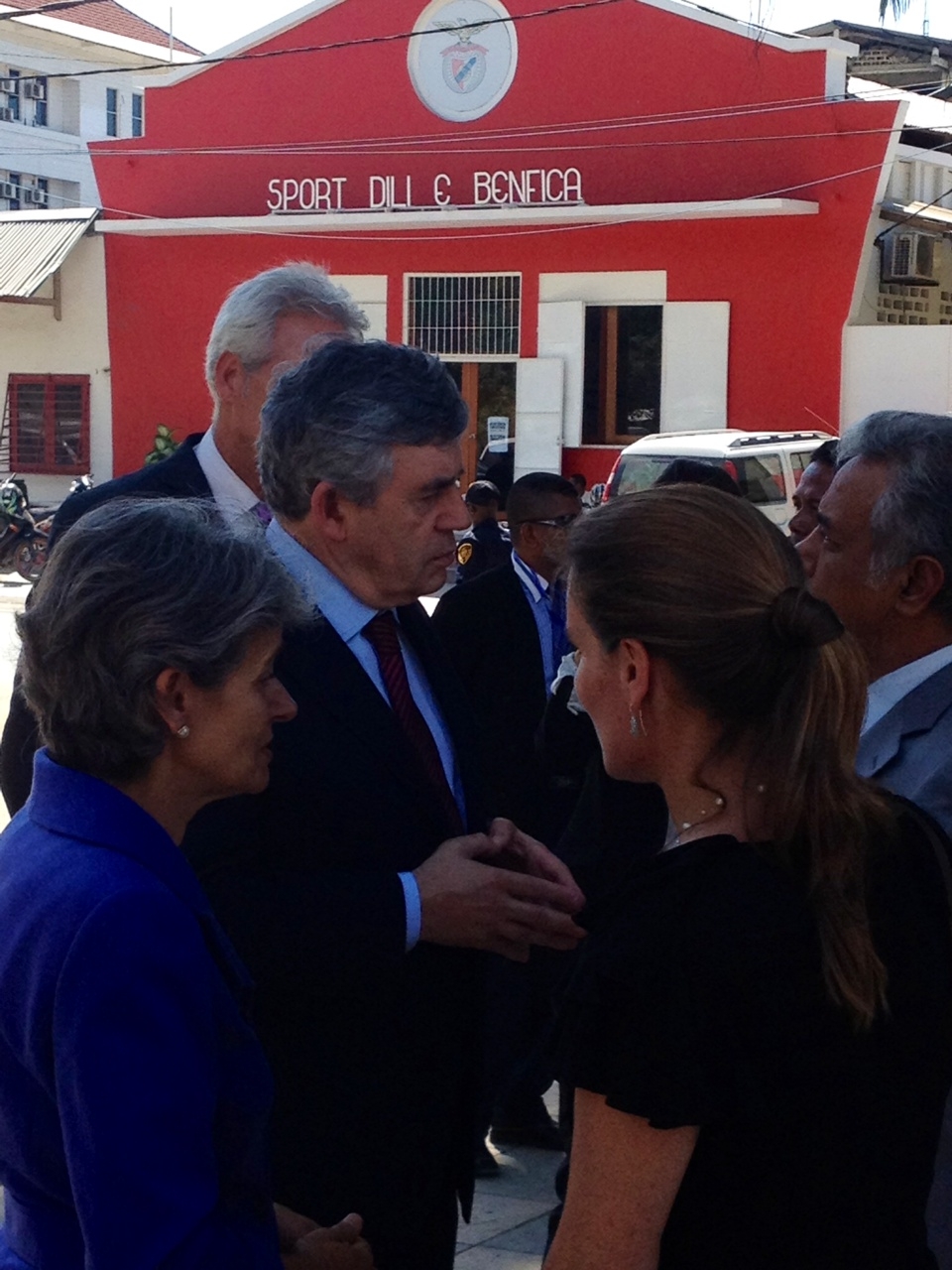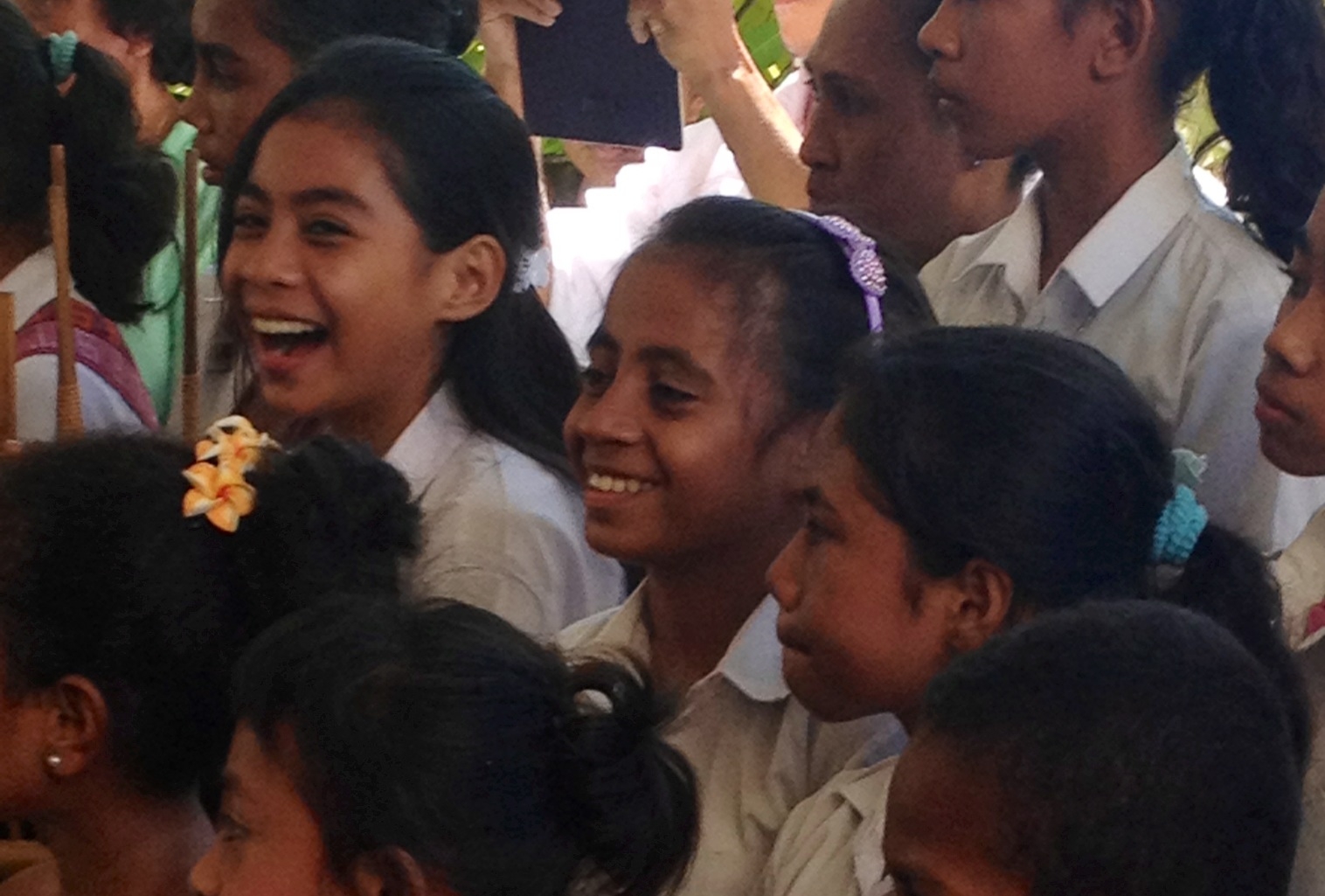 Last week, the UN Secretary-General, accompanied by his Special Envoy for Global Education, Gordon Brown and the Director-General of UNESCO, Irina Bokova, visited Timor-Leste on an education tour. The trip came in advance of a major announcement in September of the Secretary-General’s new global education initiative, Education First, which aims to raise the political profile of education and accelerate progress towards the 2015 education goals and beyond.
Last week, the UN Secretary-General, accompanied by his Special Envoy for Global Education, Gordon Brown and the Director-General of UNESCO, Irina Bokova, visited Timor-Leste on an education tour. The trip came in advance of a major announcement in September of the Secretary-General’s new global education initiative, Education First, which aims to raise the political profile of education and accelerate progress towards the 2015 education goals and beyond.
The scenario in Timor-Leste was all too familiar for UN Secretary-General Ban Ki-Moon, who grew up during war in South Korea knowing firsthand the power of the international community’s support for education. “All I had for a classroom was the tree we gathered around. We had no chalkboards or textbooks. I know education deprivation first-hand. I also know the power of education to transform,” Ban said in his speech to school children during his trip.
At first glance, Timor-Leste’s 85 percent primary school enrollment rate would make it appear to be post-conflict education success. However, a closer look reveals the deeper challenges in the education system that will hold back social and economic progress if unaddressed, making the case for international support for education in post-conflict settings such as Timor-Leste.
Challenges Facing Timor-Leste’s Education System
With one out of every two adults unable to read and nearly two-thirds of children suffering from stunting, the early and most crucial years of a child’s development in Timor-Leste are not suited towards preparing a child to learn and thrive in society. Only one out of 10 children have the chance to go to preschool; the first time most children step into a classroom is at the age of six or seven. Upon entering school, chances are the language of instruction is different from the language they speak at home, further complicating the learning process.
 For those who stay in school, the outcomes are not promising. Teachers are not adequately trained and face challenging circumstances ranging from poor facilities and materials to overcrowded classes. More than 70 percent of children cannot read a single word in Portuguese or Tetum at the end of first grade; 40 percent cannot read a single word after two full years of school. Repetition rates are high in the first three grades of school, comprising more than half of the children enrolled. And only 37 percent of children will continue on to secondary school.
For those who stay in school, the outcomes are not promising. Teachers are not adequately trained and face challenging circumstances ranging from poor facilities and materials to overcrowded classes. More than 70 percent of children cannot read a single word in Portuguese or Tetum at the end of first grade; 40 percent cannot read a single word after two full years of school. Repetition rates are high in the first three grades of school, comprising more than half of the children enrolled. And only 37 percent of children will continue on to secondary school.
New elections, new leaders, renewed commitment to education
There is hope for Timor-Leste. The country has made great strides since years of conflict when nearly 85-90 percent of the education infrastructure was destroyed. As a country that has just celebrated its tenth year of independence, the new leadership agrees that investing in human potential is essential to building a sustainable and prosperous future. The country has recently completed an education strategy through 2030. The newly elected president, prime minister, minister of education and others all pledged to strengthen their efforts to mobilize internal resources to support education and look at what policies can be put into place to reach the most marginalized, achieve universal access, expand preschool coverage, and improve teacher training and overall learning outcomes across the education system.
In the Secretary-General’s public announcement of Education First at the University of Timor-Leste, Director-General Bokova challenged youth to be part of the domestic development plan of the country. Special Envoy Brown encouraged the university students to consider going into the teaching profession to help build the human capacity of the country.
The Role of the International Community
Amidst the internal commitments of the people of Timor-Leste, there are questions about the role of the international community in supporting the post-conflict nation. Many international organizations have pledged and implemented support: UNICEF and UNESCO have active projects on the ground in fostering child-friendly classrooms and adult training and literacy, among other initiatives. Portugal and Australia are the two largest bilateral donors to the country, contributing $14 million and $9 million respectively, to education through official development assistance. Timor-Leste requested $5 million from the Global Partnership for Education and received a grant of $2.8 million over three years in December 2011.
But much more needs to be done in terms of international support and collaboration with the government in order to help Timor-Leste achieve its ambitious education strategy. Given the government’s agenda, commitment and readiness to increase domestic support for education, the international community should do the same to help accelerate progress. While the typical incentives for business engagement in emerging economies may not exist in Timor-Leste, the support of the business community could help catalyze progress in several areas of the country’s education agenda. Likewise, foundations and nontraditional donors could play a role in supporting Timor-Leste.
When announcing Education First, the Secretary-General referred to creating a “bold big push” for education. And a bold push is what is needed. Actors from across sectors and disciplines must come together to support countries like Timor-Leste who have developed strong national plans and demonstrate the political commitment. It is now up to the international community to step to the plate with the additional financial, coordination and capacity support necessary to help countries like Timor-Leste reach their ambitions.


Commentary
Putting Education First in Timor-Leste
August 21, 2012